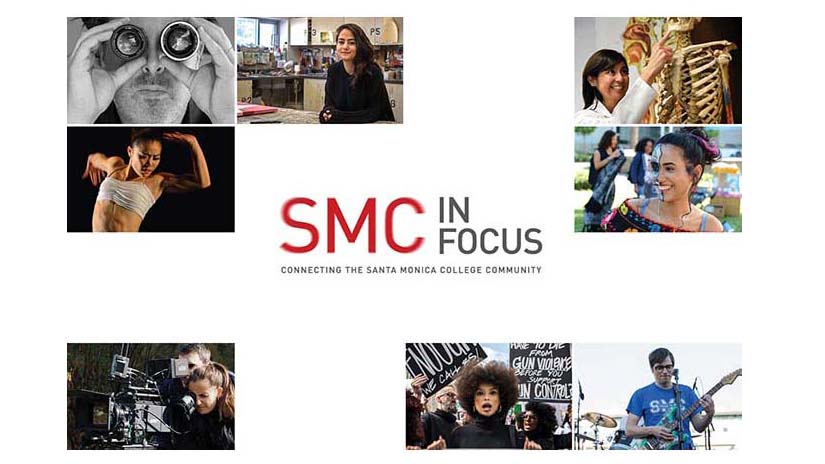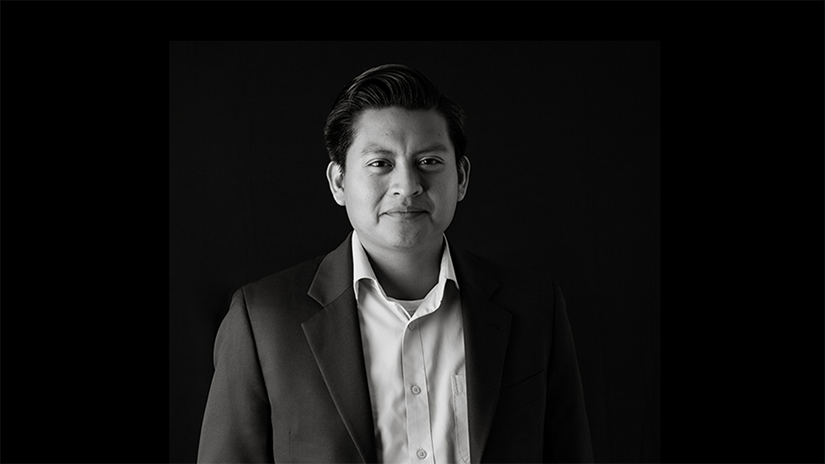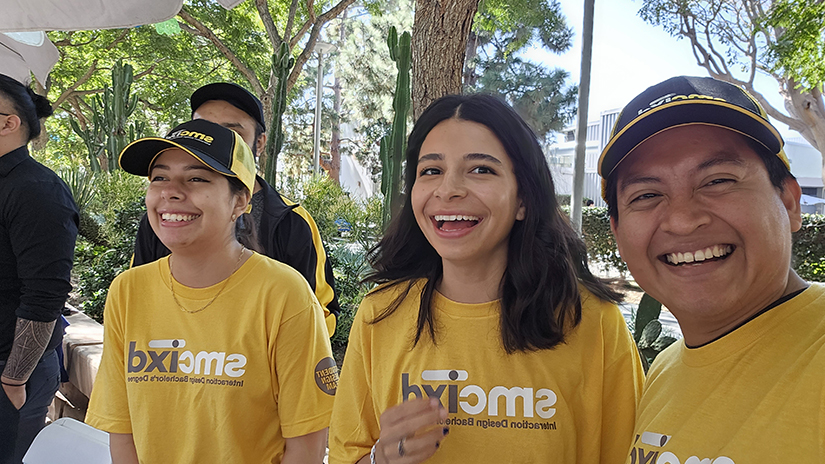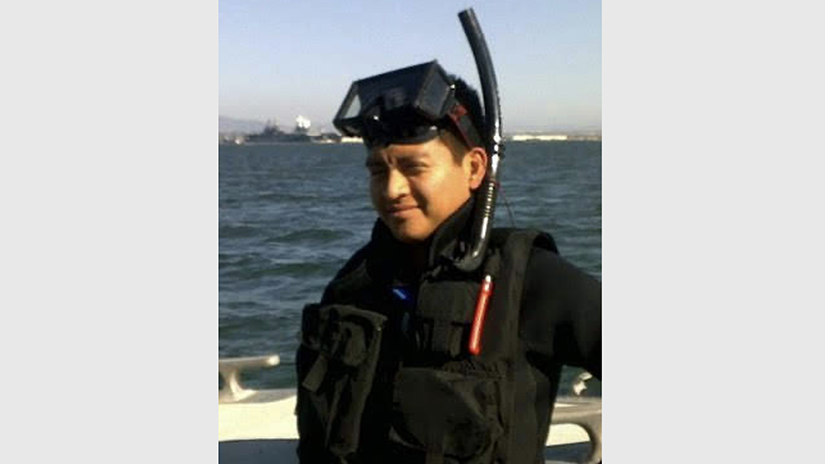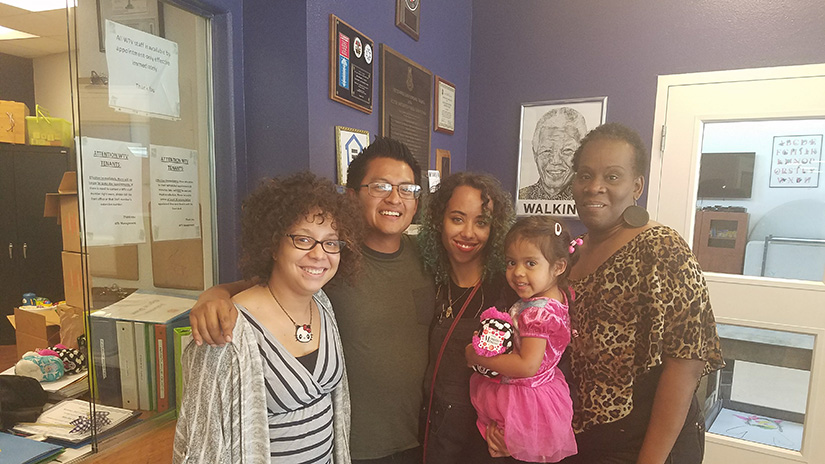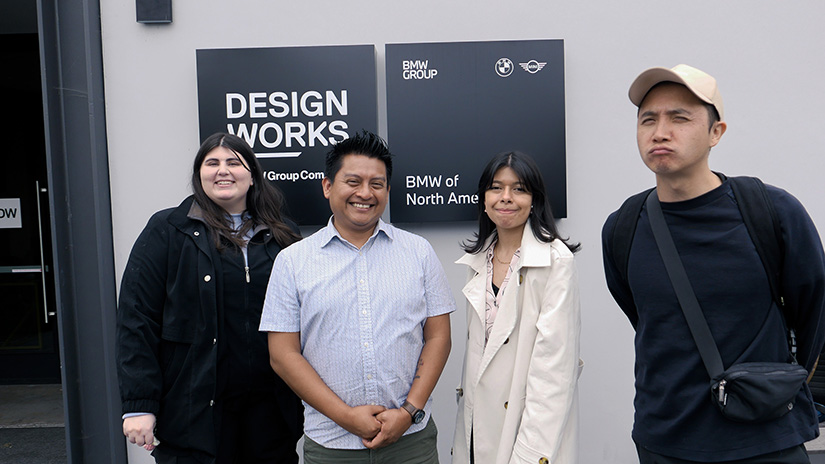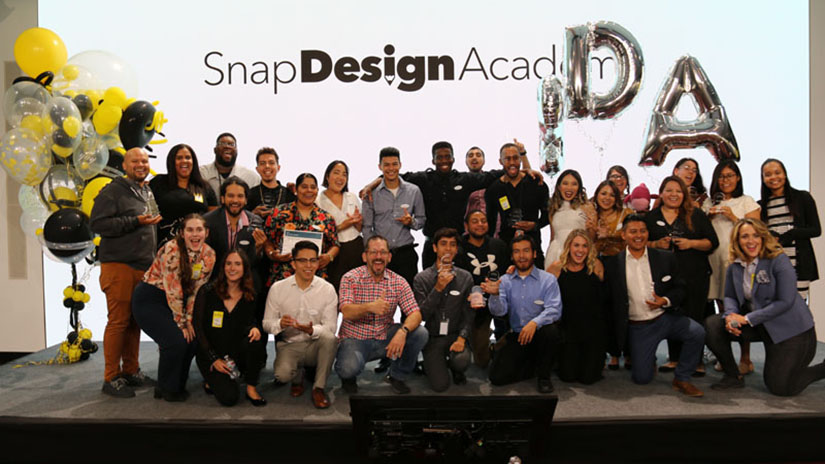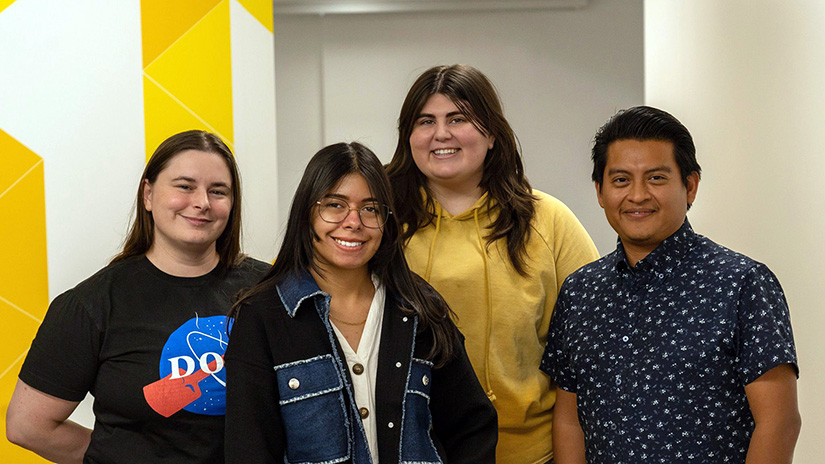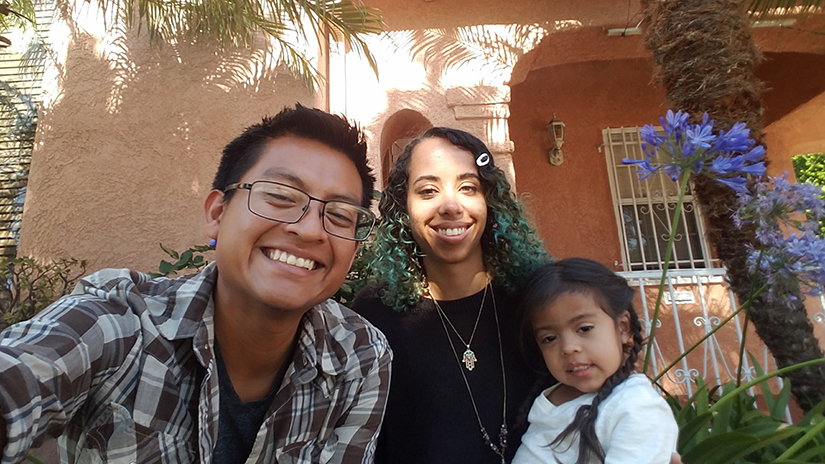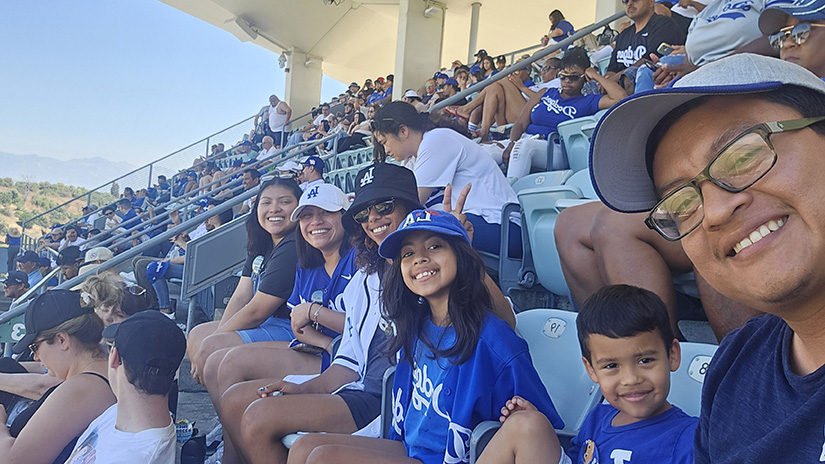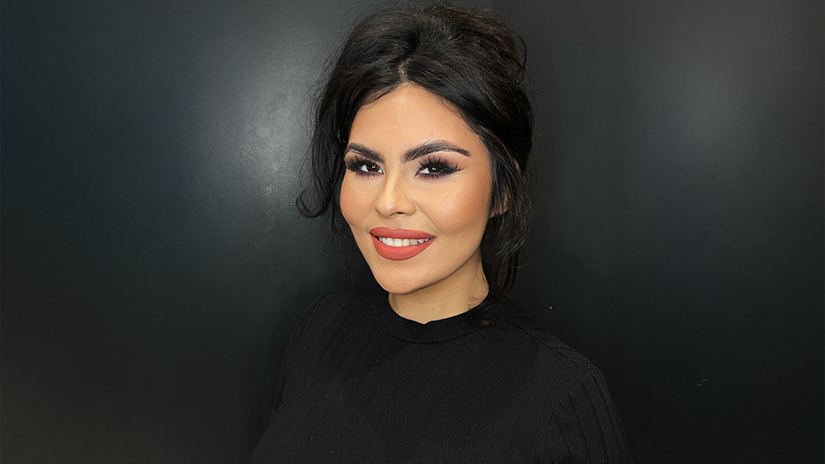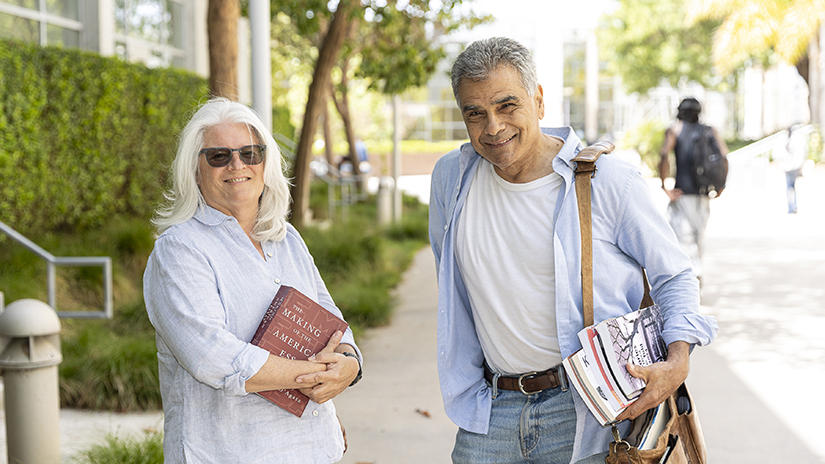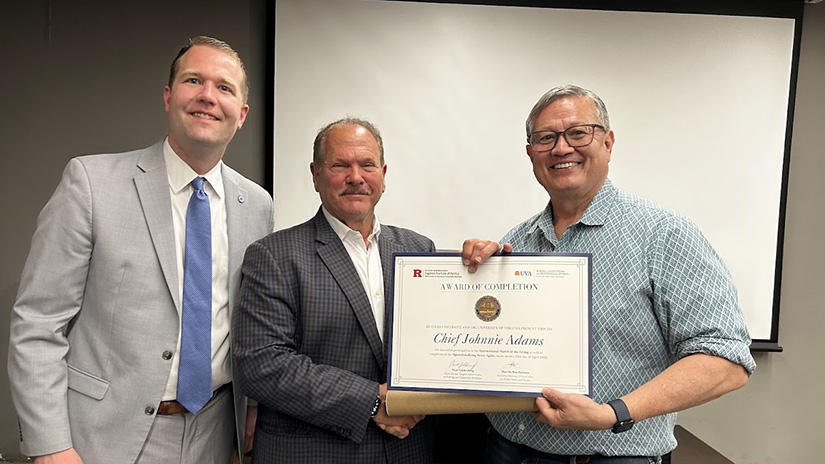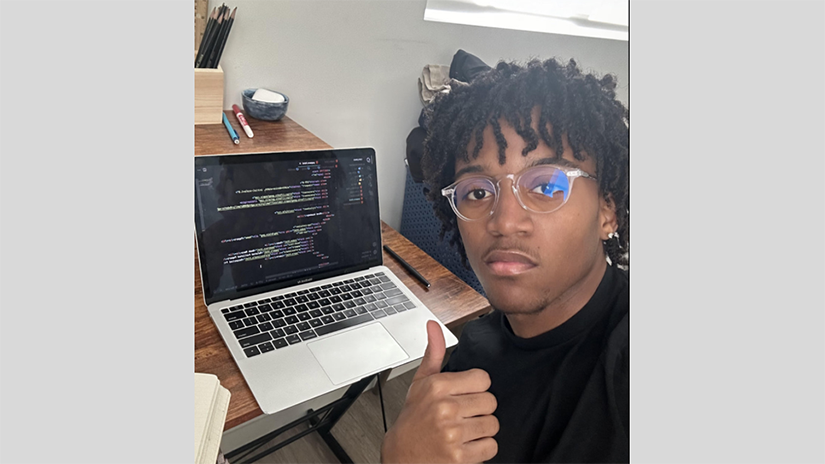
After serving his country in the U.S. Navy, Antonio Renoj lost his home when a stolen rent check triggered a cascade of hardships. But Santa Monica College helped him get back on track by enabling him to turn his creativity into a promising future.
He turned to the Veterans Administration for assistance, and they helped him get placed at the Salvation Army’s Westwood Transitional Village, a temporary housing facility for veterans facing homelessness. Through the rehousing program, he was offered a choice. “They told me I had to find full-time work with a living wage or go back to school to learn a trade,” he recalls.
Antonio had always been a hard worker, but since leaving the military in 2010, he had drifted from job to job—delivery driver, social worker, restaurant manager—never feeling like he was building toward anything.
That’s all changed now. Antonio is graduating from SMC with a bachelor’s degree in interaction design (IxD) and an associate’s in graphic design.
Starting Over
A turning point came when Antonio’s wife, Brittanie, a photographer and creative spirit, introduced him to the world of filmmaking. “She
taught me how to use a camera, how to put together a vision,” he recalls. The couple
collaborated on photo and video projects, igniting his passion for visual storytelling.
But without a degree, even freelance jobs were limited. In 2017, he discovered SMC’s
then-new—and still innovative—Interaction Design program, which blends design and
user experience with technology to make platforms from apps to mobile devices and
the web easier and more inviting to use.
“Design had always been in the back of my mind—I just didn’t know what to call it,”
he says. “I was solving problems, but I didn’t see that as design work yet.”
A well-rounded education at SMC also enabled Antonio to brush up on fundamentals—from
English and math to video and sound editing. “It felt like starting from scratch,”
he says, “but in a good way.”
Practical Design
Studying graphic design at SMC led to a summer workshop with Snap Inc., the firm behind Snapchat, which he secured with the help of SMC graphic design instructor Nicola Vruwink. He joined the first cohort of the Snap Design Academy, pitched a prototype to the CEO and left with a new sense of confidence.
“It really solidified my path,” Antonio says. “After that, I knew I wanted to do this
for real.”
The Snap workshop resulted in a full-time marketing job with the Los Angeles Area Chamber of Commerce that he held for several years. While working there, he covered high-profile events
and expanded his professional network—all while taking evening classes to finish his
degree. “It wasn’t easy,” Antonio says. “But I wanted to earn that degree and finish
what I started.”
Cohort and Community
Antonio’s long-term goal is to open a design firm that helps small businesses stand
out in a crowded market. “I want to help people compete with big corporations,” he
says. “It’s not just about product design—it’s about helping people communicate, solve
problems and thrive.”
That mission became even clearer during his experience with the University Innovation Fellows program, which is run by Stanford University’s Hasso Plattner Institute of Design. Antonio and three other SMC IxD students were among 164 students selected from 44
higher education institutions in 13 countries for the 2024 program. Over eight weeks,
he prototyped a project to connect SMC students with startups through a tech fair.
“It taught us to move fast, test ideas and iterate,” he says. “It was like an IxD
crash course on steroids.”
For Antonio, SMC’s IxD program was about more than technical skills. Its courses enabled
him to grow as a leader, collaborator and communicator. “Project management taught
me how people really work,” he says. “And learning how to pitch ideas, to bring others
along with you, that was huge.”
Highlights included a collaborative project with BMW DesignWorks, where students developed a vision for an AI companion in an autonomous vehicle.
“That prompt pushed us to think in new ways,” he says. “We created a vision video
and pitched it to the CEO and her team.”
The cohort model also made a difference. “You build trust with your peers,” he says.
“You learn how to disagree, how to support each other and how to turn conflict into
creativity. It’s a safe space to take risks.”
Foundational Support
Antonio’s story is one of determination, support and belief—in himself and from others. He credits his family for backing him through late nights and tough calls. “I couldn’t have done it without them,” he says. “They’ve been my foundation.”
He also thanks the SMC counselors who helped him navigate financial aid and CalWORKs, and the IxD faculty who guided him every step of the way. “The people here believed in me even when I wasn’t sure I could do it,” he says.
“That one choice—to go back to school—led to all of this,” he reflects. “And I’ll always be grateful to SMC for giving me the chance to become who I am now.”
* * *



